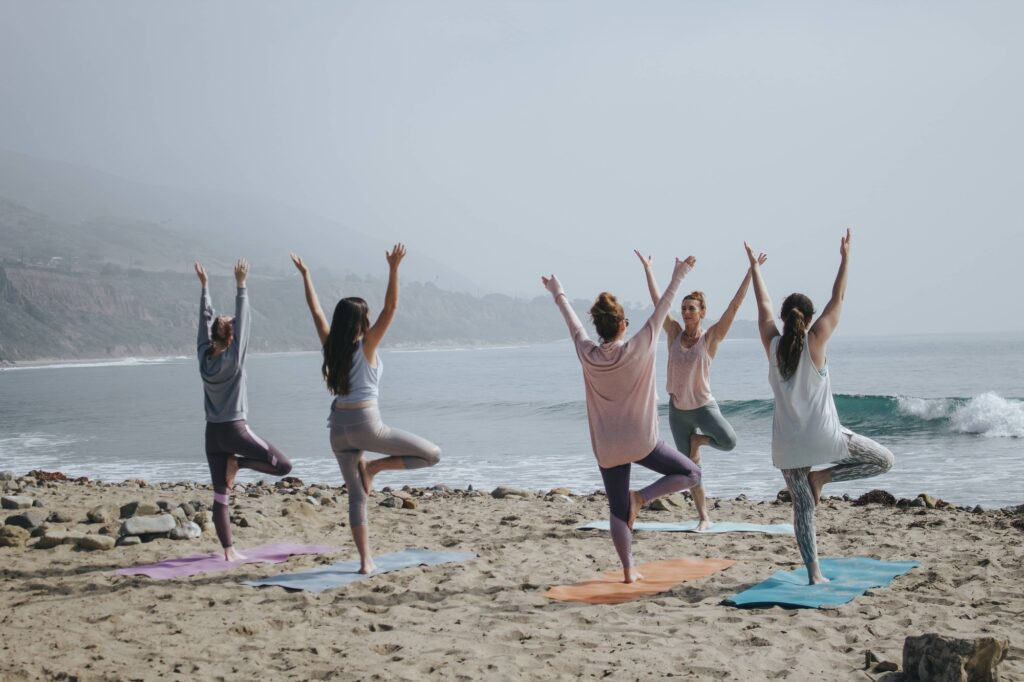Are you tired of the same old vacations that leave you feeling more exhausted than rejuvenated? If so, it’s time to consider a different kind of travel experience – wellness tourism. In a fast-paced world where self-care is often neglected, the booming sector of wellness tourism offers a refreshing and rejuvenating escape for travellers seeking to nourish their minds, bodies, and souls. Join us as we explore the exciting world of health travel and spa tourism, where relaxation meets exploration in some of the most stunning destinations around the globe.
The Growing Popularity of Wellness Travel
Wellness travel has been on the rise in recent years as more people seek to prioritize their health and well-being while exploring new destinations. The growing popularity of wellness tourism can be attributed to a shift towards self-care and mindfulness in today’s fast-paced world.
Travellers are increasingly looking for experiences that not only relax them but also rejuvenate their minds, body, and soul. From yoga retreats to spa getaways, there is a wide range of options available for those seeking a wellness-focused vacation.
Incorporating activities such as meditation, healthy eating, fitness classes, and holistic treatments, wellness travel offers a holistic approach to overall well-being. This trend is not just about pampering oneself; it’s about nourishing the body from within and finding balance in all aspects of life.
With an emphasis on relaxation and self-care, wellness tourism provides travellers with an opportunity to disconnect from the stresses of everyday life and focus on improving their mental and physical health through meaningful experiences.
Types of Wellness Tourism
When it comes to wellness tourism, there are various types that cater to different needs and preferences. One popular type is spa tourism, where travellers seek relaxation and rejuvenation through massages, facials, and other spa treatments. These destinations often offer luxurious amenities in serene settings to help visitors unwind and de-stress.
Another type of wellness travel is adventure-focused, combining physical activities like hiking, yoga retreats or surfing with mindfulness practices for a holistic experience. These trips promote overall well-being by encouraging exercise in nature while fostering mental clarity and inner peace.
Mindfulness retreats are also gaining popularity among wellness travellers looking to enhance their mental health through meditation, mindfulness exercises, and self-reflection. These programs aim to reduce stress levels and improve emotional balance by teaching participants how to cultivate present-moment awareness in their daily lives.
Culinary wellness tourism is another emerging trend where individuals explore healthy eating habits through cooking classes, farm-to-table experiences, and nutrition workshops. Travelers can immerse themselves in local cuisines while learning about the benefits of wholesome ingredients for their overall health.
Benefits of Engaging in Wellness Tourism
Embarking on a wellness tourism journey offers a myriad of benefits for both the mind and body. Engaging in activities such as yoga retreats, spa treatments, and mindfulness sessions can help individuals unwind from the stresses of daily life. These experiences provide an opportunity to disconnect from technology and reconnect with oneself in a peaceful environment.
Wellness travel also promotes physical well-being through activities like hiking, cycling, or water sports. Such activities not only improve fitness levels but also allow travellers to explore new destinations in an active way. Additionally, participating in healthy eating workshops or cooking classes during wellness trips can inspire individuals to adopt better dietary habits even after returning home.
Moreover, engaging in wellness tourism fosters emotional well-being by encouraging self-reflection and personal growth. The serene surroundings of wellness resorts create a conducive atmosphere for introspection and relaxation. By taking time for self-care during these trips, individuals can enhance their mental health and overall sense of fulfilment.
Top Destinations for Wellness Travelers
When it comes to wellness travel, choosing the right destination can make all the difference in your experience. From serene retreats nestled in the mountains to luxurious spas by the sea, there are endless options for travellers seeking relaxation and rejuvenation.
One top destination for wellness travellers is Bali, Indonesia. Known for its lush landscapes, tranquil beaches, and spiritual energy, Bali offers a wide range of wellness activities such as yoga retreats, meditation classes, and holistic healing treatments.
Another popular choice is Costa Rica, with its eco-friendly resorts surrounded by rainforests and thermal hot springs. Visitors can immerse themselves in nature while enjoying organic cuisine, and outdoor adventures like zip-lining or hiking volcanoes.
For those looking for a European escape, Tuscany in Italy is a dreamy destination with vineyard spa resorts offering wine therapy treatments amidst rolling hills and historic villages. And let’s not forget about Thailand’s Koh Samui island with its luxury beachfront resorts offering traditional Thai massages and detox programs.
Tips for Planning a Wellness Trip
Planning a wellness trip can be an exciting and rejuvenating experience. Start by identifying your goals for the trip – whether it’s to relax, destress, or focus on fitness. Research different wellness destinations that align with your preferences, such as spa resorts, yoga retreats, or nature-oriented getaways.
Consider factors like location, budget, accommodation options, and available activities when selecting a destination. Look for packages or deals that include wellness services like massages, meditation sessions, healthy meals, and outdoor excursions.
Pack essentials such as comfortable workout clothes, swimwear for thermal springs or pools, sunscreen for outdoor activities,
and any personal items like journals or books to enhance relaxation during downtime.
Plan out your itinerary but also allow flexibility for spontaneous moments of self-care.
Stay hydrated throughout your trip and prioritize rest to fully recharge both physically and mentally. Research local customs
and traditions beforehand to fully immerse yourself in the wellness experience offered at your chosen destination.
Challenges and Criticisms of the Industry
As the wellness tourism industry continues to thrive, it also faces its fair share of challenges and criticisms. One common critique is the potential for greenwashing, where businesses falsely claim to be eco-friendly or sustainable just to attract health-conscious travellers. This can mislead consumers who are genuinely looking to make responsible choices during their trips.
Another challenge is the affordability of wellness travel experiences. Many luxury resorts and retreats offer high-end services that come with a hefty price tag, excluding those who may not have the financial means to access such offerings. This exclusivity can perpetuate inequality in accessing health-focused benefits.
Moreover, there are concerns about cultural appropriation in wellness tourism. The commodification of traditional healing practices from different cultures without proper respect or understanding can lead to exploitation and misrepresentation.
In addition, critics point out the lack of regulation in certain aspects of the industry, such as certifications for practitioners or standards for treatments offered at wellness centres. Without clear guidelines, there is a risk of misinformation and potential harm to travellers seeking genuine health benefits through wellness tourism experiences.
Future Predictions for Wellness Tourism
As we look towards the future of wellness tourism, one thing is certain – the industry is poised for significant growth and innovation. With an increasing focus on health and well-being, more travellers are seeking out experiences that cater to their physical, mental, and emotional needs.
Technology will play a key role in shaping the future of wellness travel. From personalized health apps to virtual reality relaxation experiences, advancements in technology will enhance the overall wellness tourism experience.
Sustainable practices will also become increasingly important in the wellness tourism sector. Travelers are becoming more conscious of their environmental impact and are seeking destinations that prioritize eco-friendly initiatives.
Furthermore, we can expect to see a rise in specialized wellness programs catering to specific demographics such as seniors, families, or solo travellers. These tailored offerings will provide unique opportunities for individuals to address their individual health goals while travelling.
The future of wellness tourism looks bright as more people prioritize self-care and holistic well-being in their travel experiences.
Conclusion
Wellness tourism is undeniably a booming sector within the travel industry. With more people seeking ways to prioritize their health and well-being, the demand for wellness travel experiences continues to rise. From exotic retreats to relaxing spa resorts, there are endless opportunities for individuals to rejuvenate their minds, bodies, and souls through wellness tourism. As the industry evolves and adapts to changing consumer preferences, we can expect even more innovative offerings and destinations catered towards promoting holistic healing and self-care. So whether you’re looking to de-stress, recharge, or simply indulge in some self-care practices, consider embarking on a wellness trip for your next vacation – your body and mind will thank you for it!
To know more, go to www.qawire.com



